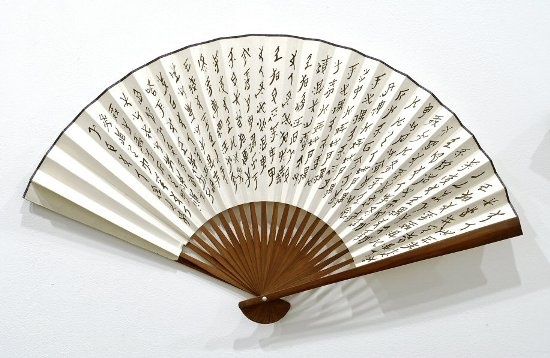“Snow Flower and the Secret Fan” by Lisa See
It’s is difficult to evaluate a book which tells about
a culture so different from your own, and it’s even more difficult to review
it, but nevertheless, I decided to try.
I have struggled to read Asian authors for the last
two years and each time I picked a book and started reading, I had real
troubles analyzing the text as the symbolism and inner meanings were
indecipherable to me due to the lack of appropriate cultural background. This
novel written by an American author turned out to be an encyclopedia of Chinese
culture and answered a lot of questions that have previously arisen, so now I’m
much more prepared to read something by a Chinese writer.

Lisa See has done a profound research preparing to
write this novel and I really appreciated that, for this text managed to
preserve Chinese symbols and cultural peculiarities but present them in a way
understandable to a western reader.
“Snow Flower and the Secret Fan” gives you an insight
into the life of Chinese women in 19th century and describes all the
traditions, rituals and objects that helped to shape it. The novel’s main focus
is on a special kind of relationship called laotong – a bond between two girls
arranged at the age of 5-7, which lasts till the end of their lives. This
relationship was considered as strong as the one by blood or by marriage and
often turned out to be much more affectionate. The narrator, Lily, a woman of
80, remembers her childhood and youth and her laotong sister Snow Flower and,
telling her story, tries to figure out, how this connection influenced her
life.
The novel follows Lily through all the basic stages of
a Chinese woman’s life. The childhood of the main character is marked by the
practice of foot binding (it was considered that women should have small legs resembling
lilies or lotuses to find a husband) which is a painful and shocking
experience.
Next step is marriage arrangement, which is performed
by a matchmaker. Of course, we all know about the practice of arranged matches
but I was surprised to find out that not only the young people were forbidden
to see each other before the wedding, but also their parents were not
previously acquainted and could only send gifts or notes including only
traditional phrases through the matchmaker. In addition, female and male worlds
were so strictly separated that even after marriage the young wife stayed with
her parents and only came to visit her husband a couple times a month. They
moved in together after the woman got pregnant and even after the birth of a
child they lived in different rooms seeing each other only at the family dinner
or in bed.
Although Lisa See doesn’t want to present a woman as a
victim of the patriarch system and the narrator willingly accepts her social
position, the reader cannot but notice how difficult it was to be a woman in 19th
century China. Women were considered submissive to their fathers, later – to their
husbands and in elderly age – to their sons. The main function of a woman was
to give birth to a son who would be the heir in future. If the child was not a
boy but a girl, she had to ask for forgiveness from her husband and
mother-in-law. The husband was free to take concubines if he could afford it
but for the woman the only permitted relation out of her family was with her
laotong. It is easy to guess why Snow Flower played such an important role for
the narrator in these circumstances.
While Lily, being a practical type, is trying to obey
the tradition and make the most of the position she is destined to have, Snow
Flower is more of a dreamer and, although reserved from the outside, secretly
yearns for spiritual and physical freedom.

Chinese women being restricted in the outer
representation of their thoughts and emotions, are described as having a wide
inner world. This is a culture where little happens without but a lot within.
For this reason, the novel may seem unemotional to some readers but here you
have to read between the lines.
“Snow Flower and the Secret Fan” presents a rich
symbolism of Chinese culture – every action and decision is lead by signs,
horoscopes, nature observation; colours, drawings and gifts always have a
secret meaning. Having to put up with bans and restrictions, women use Nüshu
writing as a type of a secret sign system, which being phonetic and limited in
linguistic means gives way to many suppositions and double meanings. The main
function of it is to shape a separate female world as well as to serve as a
means of expressing strong emotions which cannot be shared otherwise, to give
way to everything the girls have to conceal within. Nüshu notes on paper,
clothes, handkerchiefs and on the fan mentioned in the title become the main
channel of communication for Lily and Snow Flower and help their bond last for
many years. The fan also represents their life path as the girls mark on it the
most important events of their lives.

The other symbolic system represented in the novel is
folklore in the form of songs and poetry. Songs accompany every occasion
beginning with weddings and funerals, ending with everyday routine. They can be
not just traditional ritual songs but also (and more often) improvisations. The
author describes singing as a purely female way of communication and alongside
with Nüshu they help women to express themselves (or sometimes to hint at something
they cannot say openly). Song also is used as an educational device as mothers,
aunts and older sisters often sing some tales and moralistic stories to
children rather than tell them.
Poetry is an additional symbolic device used by the
women of higher rank and more profound upbringing. The author introduces both original
Chinese poetry and some pieces stylized to resemble it. The poetry read by the
girls and their letters contain a number of motifs (frequently repeated images)
– golden lotus (as a name for bound feet and a symbol of elegance and beauty),
birds (symbol of soul and purity), sky and clouds (desire for freedom).
Apart from the story of the girls’ friendship, the
author pays attention to some prominent historical events of the period,
describing change of emperors and how it influenced the people in the country,
a typhoid epidemic that alongside with pest and cholera was one of the most
dangerous natural disasters throughout the world, and finally Taiping Rebellion.
The latter was a movement to reestablish the social order of China, giving more
power to the folk, overthrow monarchy and turn the Chinese into a modified form
of Christianity. Lisa See is not interested in the rebellion itself, but tries
to imagine the feelings of Chinese people who found their country on the verge
of a Civil War.
Although this is a perfect example of feminine prose –
written by a woman, for women and about women, it will be interesting for men
too or in fact, for anyone who fancies China and its culture. It has a
beautiful rich and elegant language and although the plot is rather simple, it’s
other qualities make up for it. This read will surely become a page turner for
you!





Comments
Post a Comment